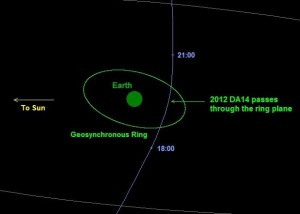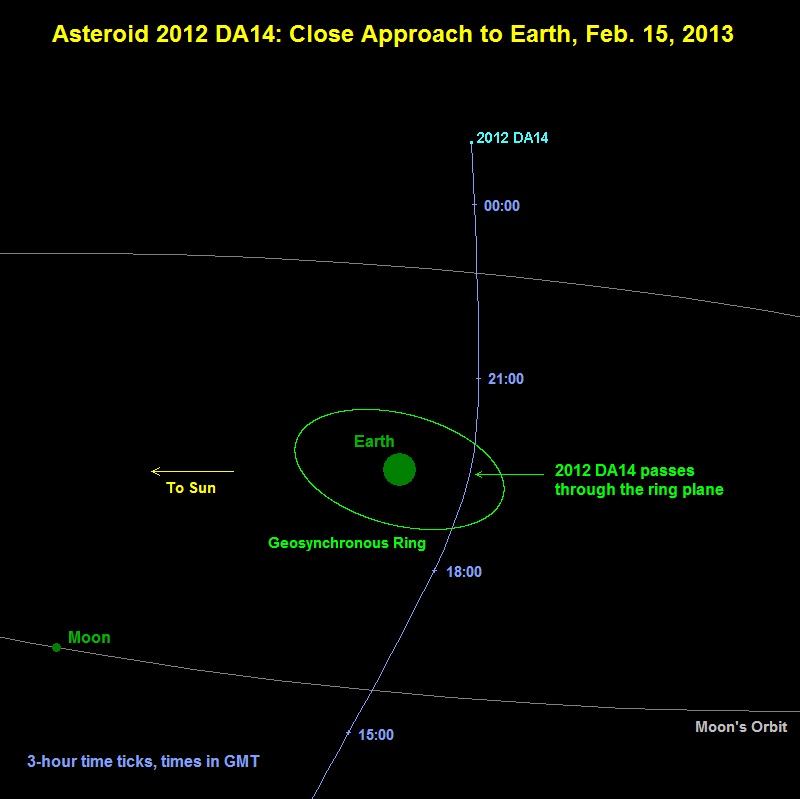BIG BANG NEWS
RESEARCH, TECHNOLOGY, SCIENCE, DIACHRONIC NEWS, COMMENTS, ,SPORTS,MUSIC,SKY AND STARS,AND MUSH MORE.
Αναζήτηση αυτού του ιστολογίου
Πέμπτη 7 Φεβρουαρίου 2013
Τρίτη 5 Φεβρουαρίου 2013
13 Ιανουαρίου 2013.
Δύο μικρά νησιά είχαν μεγάλο αντίκτυπο στις ουρανό πάνω από τον Ειρηνικό Ωκεανό, τον Ιανουάριο του 2013, η δημιουργία του Paisley σχέδια που εκτείνεται 280 χιλιόμετρα (175 μίλια). Το ψήφισμα Μέτρια απεικόνισης Φασματοραδιόμετρο (MODIS) της NASA για Terra δορυφόρου συνέλαβε αυτή την εικόνα φυσικών χρωμάτων στις 13 Ιανουαρίου 2013.
Τα Juan Fernandez νησιά βρίσκονται περίπου 800 χιλιόμετρα (500 μίλια) από την ακτή της Χιλής. Το μεγαλύτερο από αυτά-Isla Alejandro (Αλέξανδρος) και Selkirk Isla Robinson Crusoe-Τα ηφαιστειακά νησιά που βρίσκονται κατά μήκος ενός Ανατολής-Δύσης τείνοντας-υποβρύχιο κορυφογραμμή. Κάθε νησί διαθέτει ένα ψηλό σύνοδο κορυφής. Με έκταση 52 τετραγωνικά χιλιόμετρα (20 τετραγωνικά μίλια), Isla Alejandro Selkirk φτάνει σε υψόμετρο από 1.650 μέτρα (5.413 πόδια) πάνω από την επιφάνεια της θάλασσας. Ελαφρώς μικρότερη, Isla Robinson Crusoe έχει μια συνολική έκταση 48 τετραγωνικά χιλιόμετρα (19 τετραγωνικά μίλια), και φτάνει σε υψόμετρο από 922 μέτρα (3025 πόδια).
Τα νησιά είναι αρκετά ψηλός για να διαταράξει τη ροή του αέρα πάνω από τον ωκεανό. Όταν ένα αντικείμενο, όπως ένα νησί παρεμβαίνει με την κυκλοφορία του αέρα, von Karman δίνες σχηματίζουν στον αέρα για το κατάντη (ή υπήνεμη) πλευρά του νησιού. Επίσης γνωστό ως δίνη δρόμους, που είναι διπλές σειρές των δινών σπείρα που γίνονται ορατά από τα σύννεφα.
Day 7: Child held hostage in bunker
Jimmy Lee Dykes is the suspect accused of taking a 5-year-old boy off of a school bus and holding him hostage in an underground bunker. Today will mark the seventh day the two have been underground.Over the past few days, we've gotten a better idea of what this bunker looks like where the suspect is holding his young hostage. We know the bunker is several feet underground behind a camper and a large shed. It's about 15 feet by 15 feet, with stairs leading up to the doors. For more informaton please visit
Δευτέρα 4 Φεβρουαρίου 2013
ΣΤΡΑΤΙΩΤΙΚΟΙ ΙΕΡΕΙΣ
Ο π. Μιχαήλ είναι ο ιερέας της 45ης Αερομεταφερόμενης Ταξιαρχίας Καταδρομέων (VDV) του ρωσικού στρατού. Είναι και ο ίδιος αλεξιπτωτιστής όπως και οι άλλοι επτά στρατιωτικοί ιερείς που υπηρετούν στις ειδικές δυνάμεις. Το 2012 έκανε 38 άλματα με αλεξίπτωτο. Στα σακίδια αυτών των ιερέων υπάρχουν όλα τα απαραίτητα για μια λειτουργία κάτω από αντίξοες συνθήκες. Οι στρατιωτικοί ιερείς που υπηρετούν στις ειδικές δυνάμεις έχουν στην διάθεση τους και ένα φορτηγό KAMAZ διαμορφωμένο σε εκκλησία το οποίο μπορεί και να μεταφερθεί με μεταγωγικό αεροσκάφος. Ο Επίσκοπος Σάββας που είναι προϊστάμενος της θρησκευτικής υπηρεσίας του ρωσικού στρατού έχει στο ενεργητικό του περισσότερα από 450 άλματα με αλεξίπτωτο.
Οι στρατιωτικοί ιερείς που υπηρετούν στις ειδικές δυνάμεις είναι αλεξιπτωτιστές με μέσο όρο τα 250 άλματα. Στα σακίδια αυτών των ιερέων υπάρχουν όλα τα απαραίτητα για μια λειτουργία κάτω από αντίξοες συνθήκες. Οι στρατιωτικοί ιερείς που υπηρετούν στις ειδικές δυνάμεις έχουν στην διάθεση τους και ένα φορτηγό KAMAZ διαμορφωμένο σε εκκλησία το οποίο μπορεί και να μεταφερθεί με μεταγωγικό αεροσκάφος. Ο Επίσκοπος Σάββας που είναι προϊστάμενος της θρησκευτικής υπηρεσίας του ρωσικού στρατού έχει στο ενεργητικό του περισσότερα από 450 άλματα με αλεξίπτωτο.
Κυριακή 3 Φεβρουαρίου 2013
Σάββατο 2 Φεβρουαρίου 2013
Asteroid, Planets and Comet, Oh My - Feb. 2013 Skywatching Video
Asteroid 2012 DA14 to sweep close on February 15, 2013

Asteroid 2012 DA14 on February 15, 2012
|
|
A near-Earth asteroid – called 2012 DA14 by astronomers – will pass very close to Earth on February 15, 2013. Astronomers estimate that, when it’s closest to us, it’ll be within the orbit of the moon (which is about 240,000 miles away), and within the orbits of geosynchronous satellites (about 26,000 miles up). 2012 DA14 will be about 21,000 miles (35,000 kilometers) away. It will not strike Earth in 2013. Astronomers’ calculations of asteroid orbits can be trusted. After all, even decades ago, they knew enough about calculating orbits to send people to the moon and bring them safely back, and today we are able place our space vehicles in orbit around objects as small as asteroids.
So, no, 2012 DA14 won’t strike us in 2013. There was a remote possibility it might strike us in 2020, but that possibility has been ruled out also.

Asteroid 2012 DA14 will pass closest on February 15, 2013. As the image above shows, it will pass much closer than the orbit of the moon - closer even that orbiting geosynchronous satellites (22,000 miles). View larger. Image Credit: NASA
What will happen when Asteroid 2012 DA14 passes closely in 2013?
What will happen when it passes us? The short answer is … nothing. On the day it passes, most of us won’t see it or be aware of its passage, in any way. The asteroid won’t alter the tides. It won’t cause volcanoes. It’ll just sweep closely past us – as millions of asteroids have done throughout Earth’s four-and-a-half-billion-year history – some in your own lifetime.
The asteroid will be within range for small telescopes and solidly mounted binoculars, used by experienced observers who have access to appropriate stars charts. Here’s what NASA says about its visibility:
On [February 15, 2013], the asteroid will travel rapidly from the southern evening sky into the northern morning sky with its closest Earth approach occurring about 19:26 UTC when it will achieve a magnitude of less than seven, which is somewhat fainter than naked eye visibility. About 4 minutes after its Earth close approach, there is a good chance it will pass into the Earth’s shadow for about 18 minutes or so before reappearing from the eclipse. When traveling rapidly into the northern morning sky, 2012 DA14 will quickly fade in brightness.
What do we know about asteroid 2012 DA14?
Asteroid 2012 DA14 is a little guy, compared to some asteroids, although its size has not been pinned down precisely. It is thought to be about 45 meters across (nearly 150 feet across), with an estimated mass of about 130,000 metric tons.
If a space object 150 feet wide were to strike our planet, it wouldn’t be Earth-destroying. But it has been estimated that it would produce the equivalent of 2.4 megatons of TNT. How does that compare with other known impact events on Earth? In 1908, in a remote part of Russia, an explosion killed reindeer and flattened trees. But no crater was ever found. Scientists now believe a small comet struck Earth. That event has been estimated at 3 to 20 megatons. So 2012 DA14 is in the same approximate realm as the Tunguska comet (which, actually, might have been an asteroid instead). It would not destroy Earth, but it could flatten a city.
Of course, about 70% of our world is covered by oceans. That means the most likely landing spot of any incoming asteroid is in the water – not on a city or other populated area.
Astronomers at the Observatorio Astronómico de La Sagra in Spain discovered 2012 DA14 in early 2012. We know 2012 DA14′s orbit is similar to that of Earth. That is one reason the asteroid eluded astronomers until recently. You can be sure that many astronomers are carefully tracking 2012 DA14 now.
The orbit of 2012 DA14 is an inclined ellipse. In other words, it’s tilted sightly with respect to Earth’s orbit around the sun, and, like Earth’s orbit, it’s not circular but elliptical – like a circle that someone sat down on.According to Bad Astronomer Phil Plait, who appears to have used a computer program to look at its orbit:
The asteroid spends most of its time well away from our planet. However, the path of the rock does bring it somewhat close to the Earth twice per orbit, or about every six months. The last time it passed us was on February 16 [2012], when it was about 2.5 million km (1.5 million miles) away, equal to about 6 times the distance to the moon. That’s usually about the scale of these encounters — it misses us by quite a margin.
If we know it will miss us in 2013 and in 2020, why are astronomers still watching? In fact, the orbit of 2012 DA14 is not entirely pinned down, although it is known well enough to say for sure: it will not hit us next year, or in 2020.
But it will come close on February 15, 2013! It should be close enough to catch the attention of virtually everyone on Earth in February 2013, on what’s sure to be a media field day.
Will 2012 DA14 strike Earth in 2020?
No. In March 2012, when a collision between 2012 DA14 and Earth in 2020 was still remotely possible, I asked astronomer Donald Yeomans to clarify the risk. Yeomans is, among other things, manager of NASA’s Near-Earth Object Program Office at NASA’s Jet Propulsion Laboratory. In March 2012, he told EarthSky that a 2020 collision between Earth and asteroid 2012 DA14 was …
… approximately one chance in 83,000, with additional remote possibilities beyond 2020. However, by far the most likely scenario is that additional observations, especially in 2013, will allow a dramatic reduction in the orbit uncertainties and the complete elimination of the 2020 impact possibility.
It turned out they didn’t have to wait until 2013. By May, 2012, astronomers had ruled out even the remote possibility of a 2020 collision.
Still, 2012 DA14 and asteroids like it are sobering.
Bottom line: The near Earth asteroid 2012 DA14 will have a very close pass near Earth on February 15, 2013. It will sweep approximately 21,000 miles from us – much closer than the moon’s orbit and closer than geosynchronous satellites. It will not strike Earth. Its orbit around the sun can bring it no closer to the Earth’s surface on February 15, 2013 than 3.2 Earth radii.
Παρασκευή 1 Φεβρουαρίου 2013
Εγγραφή σε:
Αναρτήσεις (Atom)



